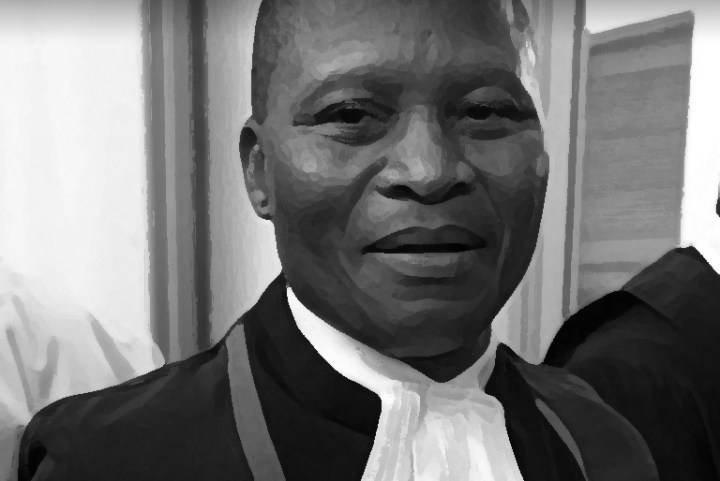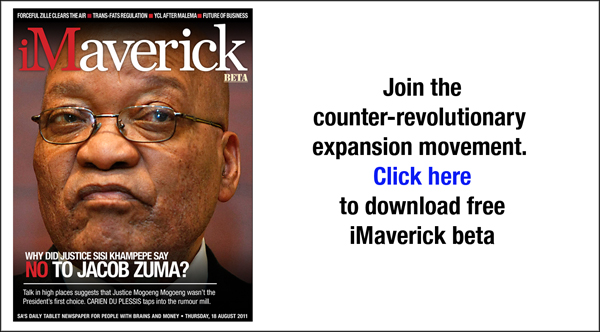Politics
Chief Justice controversy: A historical digression

Since President Jacob Zuma announced his nomination of Judge Mogoeng Mogoeng to be the new Chief Justice, there has been plenty of criticism. That is to be expected. We ourselves have our reservations, both about Mogoeng, but mainly about Zuma’s reasons for picking him. We are cynics by trade, and thus, believe that when a politician acts, no matter where in the world, they do what is in the interests of the person who matters most to them: themselves. But we were struck by a reminder of our past that trickled through as one of the critique’s of Zuma’s choice. It rings loud clanging bells for us history buffs. By STEPHEN GROOTES.
The reminder comes courtesy of Professor Frans Viljoen, the head of Pretoria University’s Human Rights Centre. He points out that the passing over of a senior jurist for one more junior – in this case the passing over of Deputy Chief Justice Dikgang Moseneke for Mogoeng – has a precedent. Twice, in 1957 and 1959, a Deputy Chief Justice was passed over for promotion. His name was Judge Oliver Shreiner, and it was a judicial scandal at the time that folded into a large wrinkle in the sprawling canvas of a constitutional gerrymandering, the likes of which have not been seen before or since in South Africa. And we’re pretty comfortable with saying it probably won’t be seen again.
In the 1950’s, the National Party was beginning to turn from a neophyte, slightly timid ruling party into the swaggering jackboot wearing 1970’s version. Sharpeville had yet to occur, and the ANC was busy transforming itself from a small grouping of 7,000 people into a nationwide movement of over 100,000. The Nats had two main priorities, to tighten the grip on power and to remove coloured people from the voters roll.
The fact that coloured people were still able to vote then was itself a slightly odd constitutional anomaly. The clause including their votes was an “entrenched clause” in the Constitution of the Union of South Africa that had been agreed in secret during the talks between the then four British colonies of Natal, the Orange Free State, the Transvaal and the Cape in 1910 (in case you were wondering, work on the Union Buildings also started in 1910. Geddit?) Coloured people in the Cape, who owned property and had certain educational qualifications, were allowed to vote. It was a franchise much more qualified than that of whites in the country at the time who just had to ensure a lack of pigmentation to have a say in the running of the place.
For the NP, this was a major problem. It was the thin end of the wedge, the idea that non-whites could vote was a threat to all of “white civilisation” in South Africa. And so came the gerrymandering.
First, the lower house of Parliament passed a law removing coloureds from the roll. That was then passed by the Senate. However in 1952, the Appeal Court, sitting in the same wood-panelled building that heard various cases relating to Hlophe and Zuma in recent years, struck down the Act, saying it was unconstitutional. A still-youngish, but slightly odd chap called Henrik Verwoerd was furious. So was everyone else in the Nasionale Party. So they then passed a law through Parliament called the “High Court of Parliament Act’. In effect, Parliament was now the highest court in the land. This would obviously remove those pesky “liberals from Bloemfontein”. The new “high court” met, and overruled the previous judgment of the Appeal Court.
But the High Court in Cape Town, and then the Appeal Court itself ruled that that law was unconstitutional as well. You can imagine how much competition there must have been among the judges to write that judgment. Never a group to let logic and rationality stand in their way, the Nats then came across another brilliant solution. They increased the number of judges on the Appeal Court. Simple, isn’t it? You can imagine the political affiliations of those who were installed as the new judges. At the same time they changed the make-up of the Senate, just to make sure there were no new problems. Seeing the writing on the wall, the opposition United Party started to boycott some of the votes, knowing they didn’t have the numbers.
In the end, the two parliamentary houses voted in favour of the new bill, and off to Bloemfontein it went. At this point, even some of the earlier judges caved, and finally, it became law that coloured people could no longer vote.
Only one judge ruled against that decision. His name, of course, was Oliver Deneys Schreiner. There’s still a bust of him in the Supreme Court of Appeal building.
The point of this little historical digression is not to say that this is what’s happening here. Zuma is not planning, as far as we know, a huge assault on the Constitution. South Africa now is very different to South Africa then. People have fought for their rights, and are unlikely to give them up easily. And it’s also a hugely vibrant place. Even within the ANC, there would be huge fights over any slight change to the Constitution. We live in a contested place.
But what we do want to point out is that everything the National Party did to remove coloured people from the voters roll was legal. That doesn’t make it right. So every time a politician says they have the right to do something, or say that what they are doing is perfectly legal, it doesn’t mean we should stop testing what they are saying against a moral yardstick. Having said that, just because a politician makes an appointment many people disagree with doesn’t make it wrong either. DM
Grootes is an EWN reporter.
Read more:
- The Official History of the Supreme Court of Appeal;
- The Rise of the South African Reich;
- The Start of the Process: History Today.
Photo:





 Become an Insider
Become an Insider